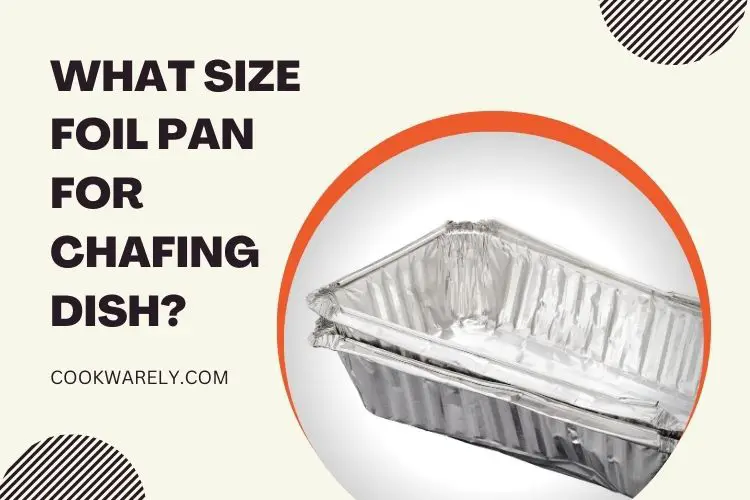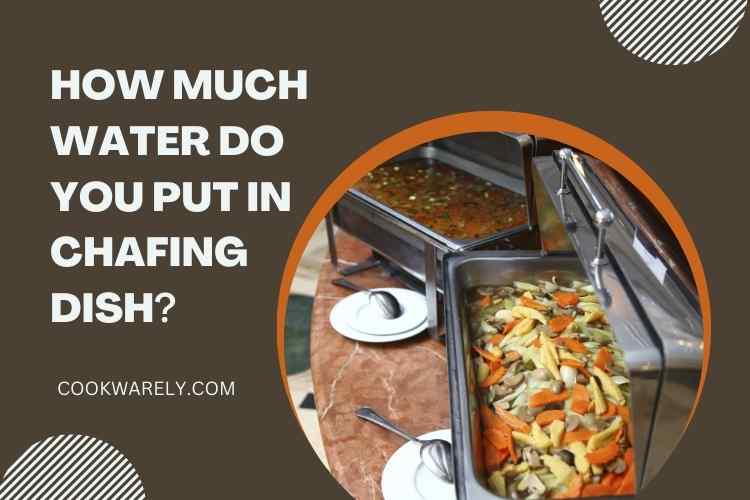What Is a Disposable Chafing Dish?
As someone who loves to entertain, I can attest to the convenience of having a disposable chafing dish on hand. But for those who may not be familiar with these handy party essentials, allow me to explain.
What Is a Disposable Chafing Dish?
Disposable chafing dishes are single-use chafing dishes made of lightweight and inexpensive materials such as aluminum foil or plastic. They are perfect for events or gatherings where you don’t want to worry about cleaning and storing the chafing dish after use.
Simply set up the disposable chafing dish, serve the food, and dispose of it when you’re done.

Why Use a Disposable Chafing Dish?
There are several reasons why you might want to use a disposable chafing dish at your next event. Here are a few benefits:
- Convenience: As mentioned earlier, disposable chafing dishes are incredibly convenient. You don’t have to worry about washing and storing them after the event, which saves you time and effort. All you have to do is set them up and serve the food.
- Cost-effective: Disposable chafing dishes are typically much cheaper than their reusable counterparts. This makes them a great option for those on a budget or for events where you don’t want to invest in more expensive equipment.
- Easy to transport: Disposable chafing dishes are lightweight and easy to carry, making them perfect for events on the go. Whether you’re catering a wedding or hosting a barbecue at the park, disposable chafing dishes are a convenient option for keeping your food warm and easily accessible.
- Hygienic: Disposable chafing dishes reduce the risk of cross-contamination since they are used only once. This is especially important if you’re serving a large group or catering an event where food safety is a concern.
- Eco-friendly: While disposable chafing dishes are not the most environmentally friendly option, biodegradable and compostable alternatives are now available on the market. These disposable chafing dishes are made of materials that decompose quickly and have less environmental impact.
How to Use a Disposable Chafing Dish?
Using a disposable chafing dish is easy.
Here are the steps:
- Set up the chafing dish: Remove the chafing dish from the packaging and unfold it. Place the shallow pan on the frame and secure it in place.
- Add the fuel: Fill the fuel holder with the appropriate fuel, such as canned heat or a chafing fuel gel. Light the fuel according to the manufacturer’s instructions.
- Place the food in the pan: Arrange the food in the shallow pan, ensuring it is evenly distributed and easy to access. Cover the pan with the lid or a foil to keep the heat in.
- Adjust the heat: If the food is not warming up fast enough, add more fuel or move the chafing dish to a warmer location. If the food is getting too hot, you can reduce the heat by moving the chafing dish away from the heat source or using a lower heat setting.
- Serve the food: Once it is heated to your desired temperature, it’s time to serve! Use the serving utensils provided with the chafing dish to scoop the food onto plates or to serve dishes. Refill the pan as needed to keep the food warm and fresh.
Tips for Using Disposable Chafing Dishes
Here are a few tips to keep in mind when using disposable chafing dishes:
- Preheat the chafing dish: To get the best results and keep your food warm, it’s a good idea to preheat the chafing dish before adding the food. This will help the food heat up faster and maintain a consistent temperature.
- Use the right fuel: Different disposable chafing dishes may require different fuels, so read the manufacturer’s instructions carefully. Some fuels, such as canned heat, can give off a strong smell, so it’s a good idea to use them in well-ventilated areas.
- Keep an eye on the fuel: As it burns, it will eventually run out. Monitor the fuel level and refill as needed to maintain a consistent heat source.
- Don’t overfill the pan: It’s important to leave enough room in the shallow pan for the food to circulate and heat up evenly. Overfilling the pan can lead to uneven heating and longer cooking times.
- Dispose of the chafing dish properly: Once you’re done using the disposable chafing dish, be sure to dispose of it properly. If the chafing dish is made of biodegradable or compostable materials, follow the manufacturer’s instructions for disposal. Follow your local waste disposal guidelines if it’s made of other materials.
Conclusion
A disposable chafing dish is convenient and cost-effective for keeping food warm and easily accessible at events and gatherings.
They are easy to use and require minimal setup and cleanup, making them a great choice for busy hosts and caterers.
With a little planning and the right fuel, you can easily serve up hot and delicious food to your guests using a disposable chafing dish.
FAQs
How to Use Chafing Dishes Disposable?
How to use disposable chafing dishes? To use a disposable chafing dish, open the box and remove the chafing dish. Place the chafing dish on a flat surface, such as a tabletop, and light the fuel cell. Allow the fuel cell to heat for approximately five minutes. Place the food in the chafing dish and cover with the lid.
How to Set Up Disposable Chafing Dishes?
To set up a disposable chafing dish, remove it from the packaging and unfold it. Place the shallow pan on the frame and secure it in place. Add fuel to the fuel holder and light it. Adjust the heat as needed to keep the food warm.
Foil Chafing Dish
A foil-chafing dish is a disposable alternative to traditional dishes that helps streamline the cleanup process. It is made of aluminum and has a wick that is lit to keep the food warm.
How to Use Foil Chafing Dishes?
To use a foil chafing dish, place it on a flat surface, such as a tabletop, and light the wick. Allow it to heat for approximately five minutes. Place the food in the chafing dish and cover with the lid.
Portable Chafing Dish
A portable chafing dish is a kind of portable grate raised on a tripod, originally heated with charcoal in a brazier, and used for foods that require gentle cooking, away from direct flames.






